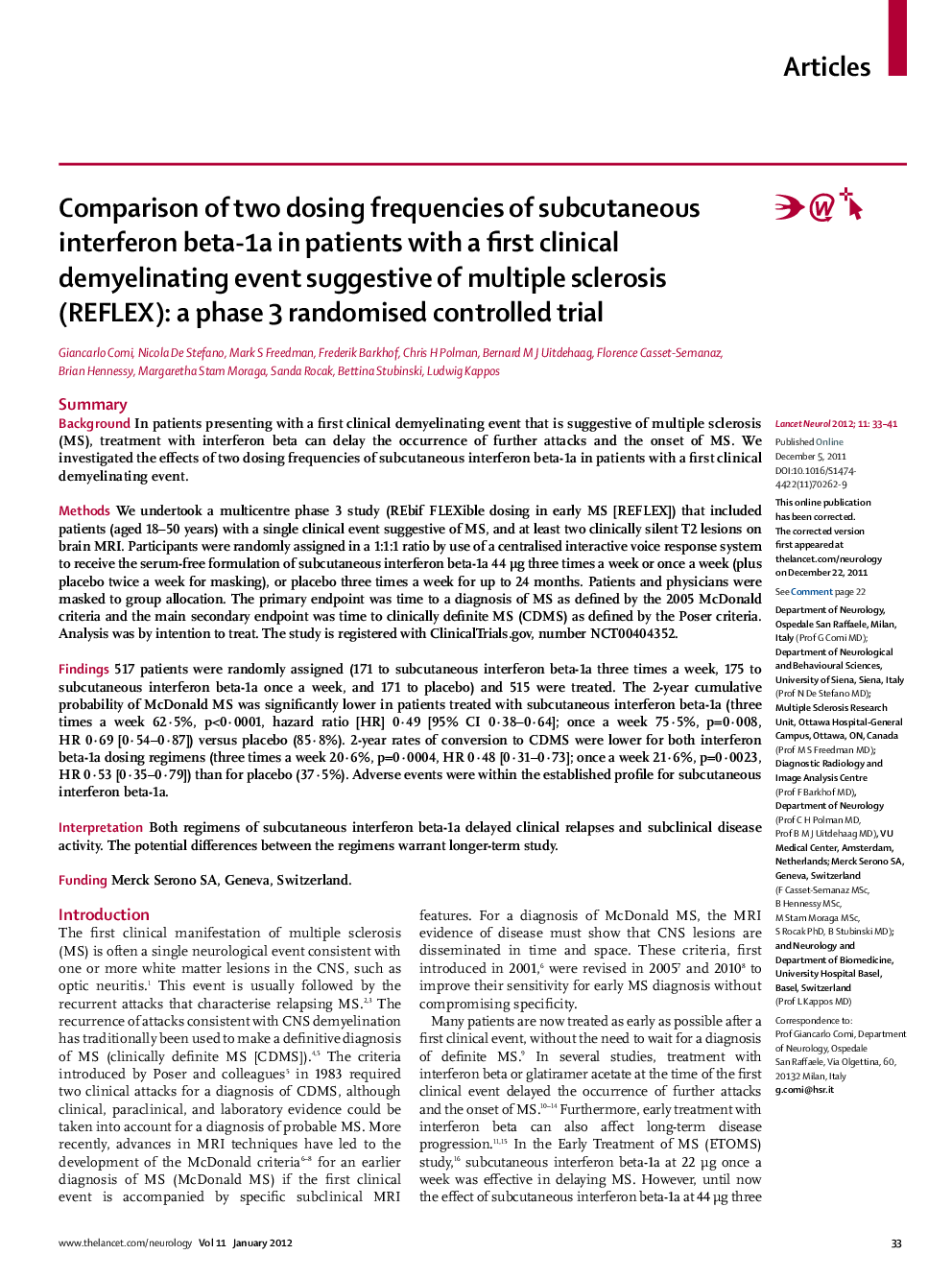| Article ID | Journal | Published Year | Pages | File Type |
|---|---|---|---|---|
| 3067015 | The Lancet Neurology | 2012 | 9 Pages |
SummaryBackgroundIn patients presenting with a first clinical demyelinating event that is suggestive of multiple sclerosis (MS), treatment with interferon beta can delay the occurrence of further attacks and the onset of MS. We investigated the effects of two dosing frequencies of subcutaneous interferon beta-1a in patients with a first clinical demyelinating event.MethodsWe undertook a multicentre phase 3 study (REbif FLEXible dosing in early MS [REFLEX]) that included patients (aged 18–50 years) with a single clinical event suggestive of MS, and at least two clinically silent T2 lesions on brain MRI. Participants were randomly assigned in a 1:1:1 ratio by use of a centralised interactive voice response system to receive the serum-free formulation of subcutaneous interferon beta-1a 44 μg three times a week or once a week (plus placebo twice a week for masking), or placebo three times a week for up to 24 months. Patients and physicians were masked to group allocation. The primary endpoint was time to a diagnosis of MS as defined by the 2005 McDonald criteria and the main secondary endpoint was time to clinically definite MS (CDMS) as defined by the Poser criteria. Analysis was by intention to treat. The study is registered with ClinicalTrials.gov, number NCT00404352.Findings517 patients were randomly assigned (171 to subcutaneous interferon beta-1a three times a week, 175 to subcutaneous interferon beta-1a once a week, and 171 to placebo) and 515 were treated. The 2-year cumulative probability of McDonald MS was significantly lower in patients treated with subcutaneous interferon beta-1a (three times a week 62·5%, p<0·0001, hazard ratio [HR] 0·49 [95% CI 0·38–0·64]; once a week 75·5%, p=0·008, HR 0·69 [0·54–0·87]) versus placebo (85·8%). 2-year rates of conversion to CDMS were lower for both interferon beta-1a dosing regimens (three times a week 20·6%, p=0·0004, HR 0·48 [0·31–0·73]; once a week 21·6%, p=0·0023, HR 0·53 [0·35–0·79]) than for placebo (37·5%). Adverse events were within the established profile for subcutaneous interferon beta-1a.InterpretationBoth regimens of subcutaneous interferon beta-1a delayed clinical relapses and subclinical disease activity. The potential differences between the regimens warrant longer-term study.FundingMerck Serono SA, Geneva, Switzerland.
